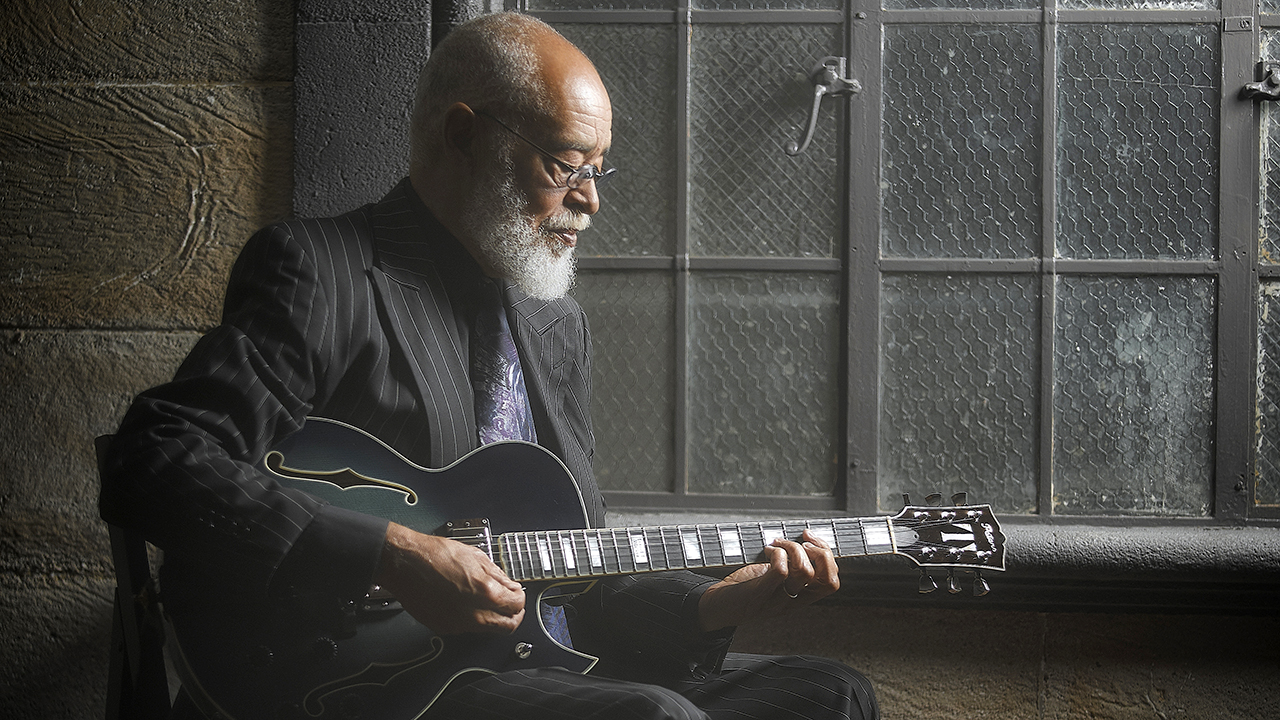
The life of a session player is never easy. Ask David T. Walker, who, at 82 years young, has appeared on dozens of albums as a gun for hire.
His origins are humble. Born in Tulsa, Oklahoma in 1941, his parents relocated to Los Angeles when he was seven, exposing him to a new world of music.
By the time he was in his 20s – with his trusty ‘50s Gibson Byrdland in hand and a Fender Tweed at his feet – Walker had become a go-to six-stringer for Detroit’s legendary Motown label.
He has released 15 records under his own name, while also lending his licks to classic records like Etta James’s Rocks the House (1963), The Jackson 5’s Diana Ross Presents The Jackson 5 (1969), Marvin Gaye’s Trouble Man (1972), and Stevie Wonder’s Innervisions (1973), to name a few.
Given that Walker’s gear remained static during his quarter-century session heyday, it might be assumed that his approach did, too. But his mentality is fluid.
“I always strived to deeply understand and feel what the artist was trying to convey,” Walker tells Guitar World. “After that, I’d look to compliment the story.”
He continues: “It was always about the music rather than solely focusing on my own desires. I aimed to create a musical experience that was supportive and harmonious. If I could come in and reflect the artist’s vision, I’d have done my job well.”
What inspired you to pick up the guitar?
“I started to play when I was 16. I was influenced by the blues players that I heard in different clubs. Their music taught me about emotions and the power of music. I always stay true to the soulful essence of the blues that inspired me from the beginning.”
When did you get into jazz, funk and soul music?
“It was during the late ‘50s when those genres were becoming popular and influential. There was a group called Kinfolks, whom I grew up with; they played those kinds of music. I loved the captivating feelings, invigorating energy and heartfelt jazz, funk, and soul vocals, which deeply resonated with me.”
What gear did you lean on most early in your session career?
“Early on I had a Gibson Byrdland from the ‘50s and various Fender Tweed combo amps. But before the Byrdland, while I was working for Motown in the mid-‘60s, I had a cheap guitar, kind of like a Byrdland.
“It fell out of the rear window of my station wagon. And when we backtracked to find it, it was gone – someone must have grabbed it. When I got to the next city, I found a small music store and bought my Gibson Byrdland with the help of Motown since I couldn't afford it at that time. I liked it very much and exclusively used it for over 25 years.”
Tell me about working with Etta James on Rocks the House in 1963.
“We had been working with Etta for live performances throughout the Southern United States. She was a very soulful lady and could sing different types of music. We were thrilled by the incredibly receptive audience at the New Era Club in Nashville, Tennessee [where the album was recorded].
“Their enthusiasm is evident in the recording. You can hear how much they were enjoying Etta’s music. They created a magical atmosphere, making that performance a cherished memory for me as a musician.”
With Marvin Gaye, we musicians could feel we were onto something extraordinary
How did you become involved with The Jackson 5 in 1969?
“I was working and recording with many artists from Motown. Then they came along with Diana Ross, and I performed on the first album [Diana Ross Presents The Jackson 5] and most of their other albums. I used my Gibson Byrdland on everything I played. And in terms of my approach, I always played what I felt or what I thought should be there.”
And how did you end up on Cannonball Adderly's The Happy People in 1970?
“I met Cannonball Adderly at NBC. He was the host of his own talk show for a bit, and he called me to be part of his TV show band – one of the greatest honors that I ever received. I didn't know he even knew who I was!”
You worked on five albums with Donald Byrd.
“They were all amazing experiences! If you guessed it, I used my Gibson Byrdland and my Fender amps on all of them. It was all catchy melodies, thrilling rhythms, and a seamless blend of jazz and funk styles, which the talented Mizell Brothers produced. The chance to improvise and contribute my musical expressions was deeply fulfilling.”
How did working with Stanley Turrentine differ from other jazz and soul artists you worked with?
“I can tell you what wasn’t different: I used the Byrdland and the Fender! Working with Stanley felt like working with any other artist because he respected my creative freedom. It was always vital for me to be able to express myself, and Stanley, like others, allowed me to do it.
“Stanley encouraged and supported my ideas, creating a productive and harmonious authenticity that could never be duplicated. Through that, we brought a shared vision to life. Despite any differences in our approach or style, the experience of working with Stanley was its own thing, while also being similar in that I was valued and given free creative reign.”
You played on Marvin Gaye’s Trouble Man and Let’s Get It On in 1972 and ’73. Did you know those records would be so impactful?
“Yes, I could sense the importance and impact. With Marvin Gaye, we musicians could feel we were onto something extraordinary. When it came to Let’s Get It On, we could feel the magic from the beginning. Marvin's ability to capture the essence of love through his soulful performances was incredible, and we could sense that these themes were timeless and would deeply resonate with audiences.”
What led you to Stevie Wonder on Innervisions in 1973?
“I first met Stevie Wonder while working with Martha and the Vandellas in Japan in 1968. I finally got to work with him in 1971 for his Where I’m Coming From album, so I was very excited for Innervisions, and the experience was great.
“Innervisions was recorded at The Record Plant in New York City, and Stevie, as you know, is always a creative person, which was fun. He made everything interesting, and it was very easy for me to contribute to whatever he was doing or thinking.
You won’t find it in my main credits, and Johnny Bristol’s records rarely get mentioned, but they meant a lot to me then and still do now
“Like with Stanley, I was again given freedom. Working alongside Stevie was a privilege – his creative nature brought a lot of excitement to our musical endeavors and made it easy for me to contribute my musical ideas and talents.”
What was it like working with Freddie Hubbard on 1980’s Splash?
“Because of Freddie’s musical freedom, it was a joy to work with him. Collaborating with someone who embraced such freedom in their own creative process added a unique and refreshing energy to our work. Believe it or not, Splash was one of my career’s most fulfilling and enjoyable recording experiences.”
Is there a session that means a lot to you that doesn’t often get attention?
“I worked on several albums with a great musician called Johnny Bristol. You won’t find it in my main credits, and those records rarely get mentioned, but they meant a lot to me then and still do now. My playing aside, Johnny Bristol was a very talented songwriter. I truly enjoyed performing on his songs.
“And the album Who Is This Bitch, Anyway? by Marlena Shaw is not only an incredible and underrated masterpiece, but also showcases an undeniable chemistry among the musicians.
“It got a lot of attention in Japan. Its impact was so strong that a reunion tour was held annually, featuring Marlena, Chuck Rainey, Larry Nash, Harvey Mason, and myself. Sadly, Marlena passed away recently, which adds a bittersweet element to its legacy.”
- Hear more of Walker’s work via his YouTube channel.






